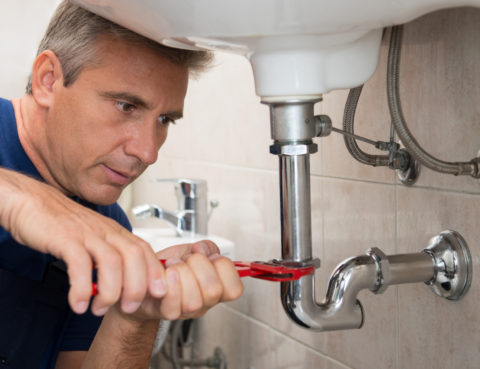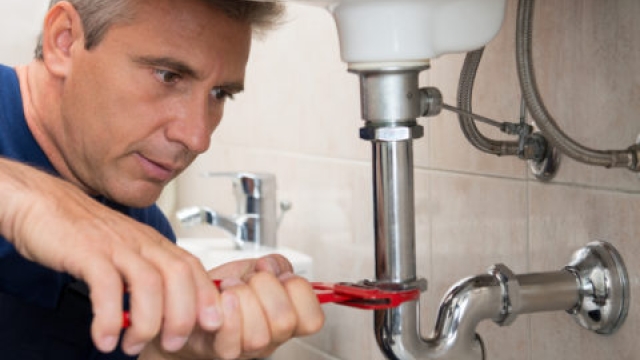Welcome to the world of plumbing, where the smooth flow of water and the efficient functioning of pipes take center stage. Whether you’re a homeowner tackling a DIY project or a skilled professional working on intricate installations, understanding the secrets to effortless plumbing is key. In this comprehensive guide, we will dive into the fundamentals, explore common challenges, and unravel expert tips to help you navigate the intricate network that brings water into our lives. So grab your wrenches and get ready to unleash the flow as we embark on this plumbing journey together. Let’s start by laying the foundation and understanding the essential elements of a plumbing system.
Understanding Plumbing Basics
Plumbing plays a crucial role in our everyday lives, ensuring the smooth flow of water and maintaining a functional drainage system within our homes. Whether you’re a new homeowner or simply curious about how plumbing works, understanding the basics is essential for any DIY plumbing project or simply knowing how to address common plumbing issues.
Plumbing Components
At its core, plumbing consists of a network of interconnected pipes, valves, fixtures, and fittings. These components work together to transport potable water to different parts of the house and remove wastewater efficiently. Each component has a specific function, such as shut-off valves to control water flow, pipes to carry water, and fixtures like faucets and showerheads for dispensing water.
Water Supply System
The water supply system is one of the fundamental aspects of plumbing. It begins with a main water line that connects to the municipal water supply or a private well. From there, water is distributed throughout the house through a network of pipes. It’s important to ensure proper pressure regulation and water filtration to maintain the quality of the water you use.
Best Plumbing Service Directory
Drainage System
While the water supply system brings water into your home, the drainage system is responsible for eliminating wastewater. Gravity plays a significant role in a drainage system, allowing wastewater to flow from higher points to lower points. Pipes connected to fixtures like toilets, sinks, and showers carry the wastewater to the main sewer line or septic tank. Proper venting mechanisms and slope in pipes help ensure efficient drainage and prevent unpleasant odors.
By understanding the basic components, the water supply system, and the drainage system, you now have a foundation for further exploration into the world of plumbing. Building on this knowledge will empower you to tackle simple plumbing tasks and recognize when to seek professional assistance. In the next sections, we will delve deeper into specific plumbing techniques and common troubleshooting tips to expand your plumbing expertise. Stay tuned for more plumbing guidance!
Essential Tools for Plumbing
When it comes to tackling plumbing projects, having the right tools is essential for a smooth and successful endeavor. Here are some must-have tools that every aspiring plumber should have in their arsenal:
Wrench: A high-quality wrench is the backbone of any plumbing toolkit. It allows you to tighten or loosen various plumbing fittings and fixtures with ease. Look for an adjustable wrench that can accommodate different sizes, ensuring maximum versatility.
Pipe Cutter: A pipe cutter is a handy tool that allows you to make clean and precise cuts on different types of pipes. Whether you’re working with copper, PVC, or other materials, a reliable pipe cutter will make your job much more efficient and ensure that your pipes fit together seamlessly.
Plunger: No plumbing toolkit is complete without a trusty plunger. Whether you’re dealing with a clogged sink, toilet, or shower drain, a plunger can quickly and effectively unclog the blockage. Make sure to opt for a sturdy plunger with a good seal to exert maximum suction power.
Pipe Wrench: While a regular wrench is great for smaller fittings, a pipe wrench is specifically designed to tackle larger pipe connections. Its adjustable jaws provide a secure grip, allowing you to easily tighten or loosen stubborn pipes for repairs or replacements.
Drain Snake: When all else fails, a drain snake can come to the rescue. This flexible tool is ideal for removing stubborn clogs deep within your plumbing system. By inserting the snake into the drain and rotating it, you can break up and remove blockages effectively.
Thread Seal Tape: When working with threaded pipe fittings, having thread seal tape is crucial. This thin, flexible tape is wrapped around the threads to create a tight seal, preventing leaks and ensuring a watertight connection.

By equipping yourself with these essential tools, you’ll be well-prepared to tackle a variety of plumbing projects. Remember, having the right tools not only makes your job easier but also ensures the longevity and efficiency of your plumbing system.
Common Plumbing Issues and Troubleshooting
- Leaky Faucets:
One of the most common plumbing issues that many homeowners face is a leaky faucet. Not only can the constant dripping become incredibly annoying, but it can also lead to wasted water and higher utility bills. To troubleshoot this problem, start by tightening the faucet handle. If that doesn’t stop the leak, you may need to replace the O-ring or washer inside the faucet. This can be done by turning off the water supply, dismantling the faucet, and installing the new O-ring or washer.
- Clogged Drains:
Another frequent plumbing issue is clogged drains, which can disrupt the flow of water and cause unpleasant odors. Troubleshooting a clogged drain usually involves using a plunger or a drain snake. Begin by plunging the drain vigorously, making sure to create a strong seal. If that doesn’t clear the clog, try using a drain snake to break up any obstructions. Insert the snake into the drain and rotate it until you feel resistance. Then pull out the snake while continuing to rotate to dislodge the clog.
- Running Toilets:
A running toilet can waste a significant amount of water over time, leading to inflated water bills. To troubleshoot this issue, start by checking the flapper valve at the bottom of the toilet tank. Ensure that it is properly sealed and not allowing water to constantly flow into the bowl. If the flapper valve is damaged, it may need to be replaced. You can find replacement flapper valves at most hardware stores. Additionally, check the float and adjust it if necessary, as an improperly adjusted float can also cause a running toilet.
Remember, while these troubleshooting steps can often address common plumbing issues, it’s always advisable to consult a professional plumber if you’re unsure or if the problem persists.
















